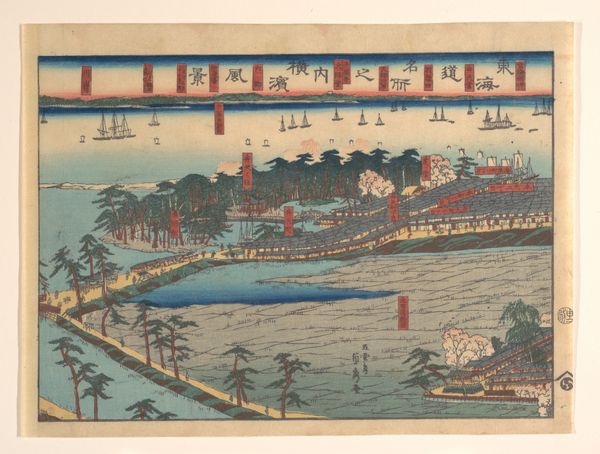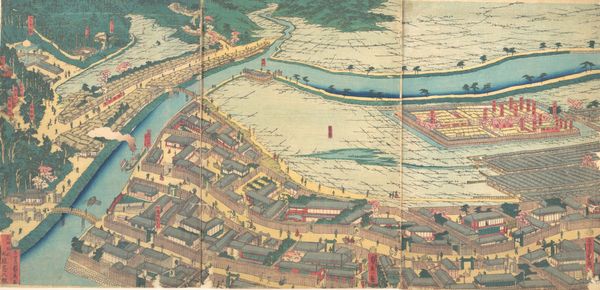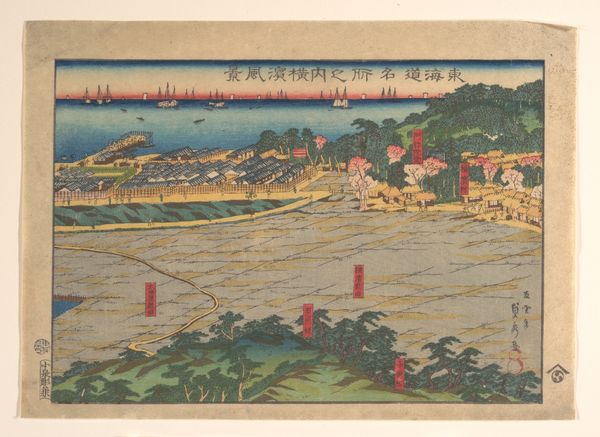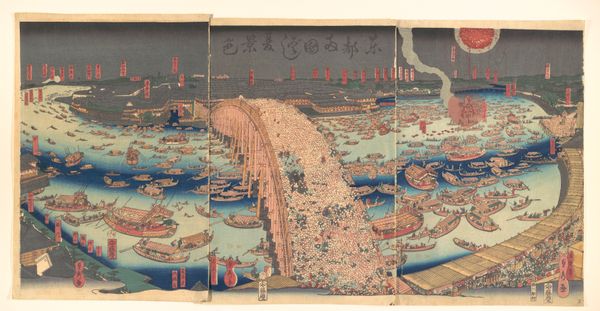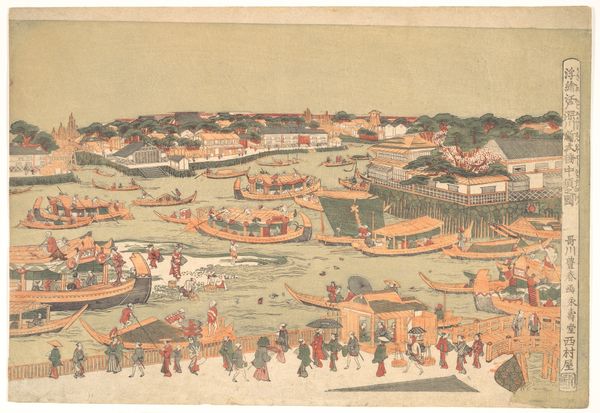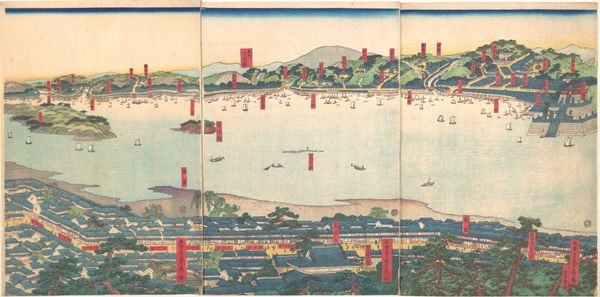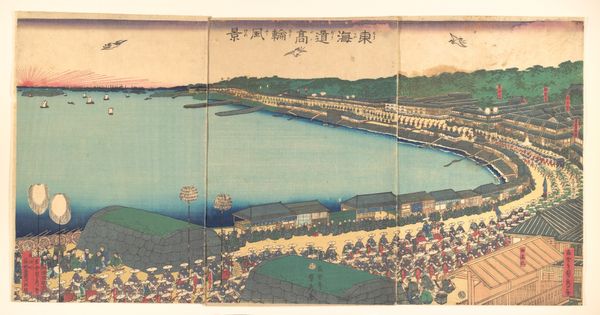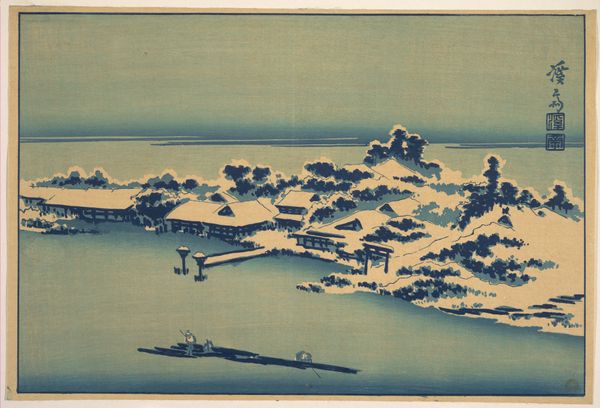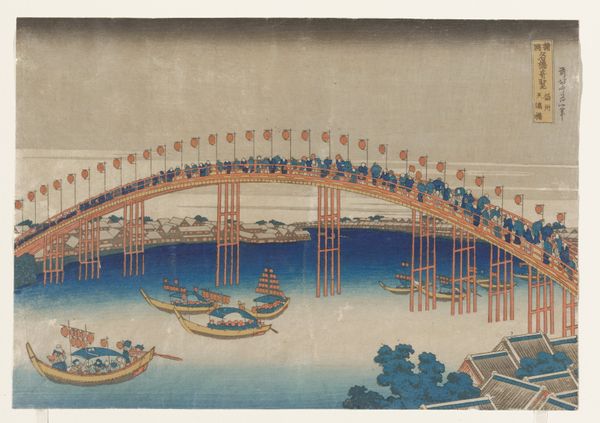
Landscape View at Yokohama (Yokohama fūkei) 1860
0:00
0:00
print, woodblock-print
#
ship
# print
#
asian-art
#
landscape
#
ukiyo-e
#
woodblock-print
#
cityscape
Dimensions: Image: 9 1/2 x 12 3/4 in. (24.1 x 32.4 cm)
Copyright: Public Domain
Curator: This serene cityscape before us is titled "Landscape View at Yokohama," created by Utagawa Sadahide around 1860. It’s a beautiful example of ukiyo-e woodblock print. What strikes you initially about the work? Editor: Well, its bird's-eye perspective feels both expansive and somehow... anxious? There’s this incredible detail in the architecture contrasted with that soft, almost pastel sky, which gives a slightly unsettled feeling. The artist contrasts precise line work and blurred background space—is there a relationship there, perhaps intentionally unstable? Curator: An apt observation. This perspective wasn’t new, but consider what Yokohama represented at the time. After centuries of isolation, Japan had just opened its doors to foreign trade. Sadahide's print captures this pivotal moment, depicting Yokohama as a modern port city bustling with Western ships, notice them scattered across the sea. Editor: Yes, and those ships…they disrupt an otherwise traditional composition. Water, historically laden with symbolism of purification and passage in Asian art, is here traversed by these agents of change. It evokes a cultural sea change as the West literally sails into the East. Curator: Precisely! Beyond the ships, look at the organization of the city itself. See how the traditional Japanese buildings in the foreground contrast sharply with the more Western-style structures emerging towards the middle ground. This is not merely a landscape; it's a study of juxtaposition, of cultural layering and potential conflict as the semiotics suggest. Editor: It is fascinating how he renders the rooftops. There’s a calculated flatness in their depiction, a kind of visual shorthand. I notice a heavy repetition of forms, that are softened with what seem to be newly blooming trees. The overall effect of those patterns emphasizes the vastness of urban space, suggesting both progress and the potential dehumanization that comes with modernization. Are these cherry trees specifically, hinting at an era of peace coming? Curator: The use of such repetitive architectural elements reinforces a sense of ordered modernity, reflecting both control and, perhaps subconsciously, a level of regulation from the modernization. Editor: So, on the one hand, it's a celebration of newfound global connections, but it subtly hints at the potential costs of embracing a new order. Curator: Exactly. The composition mirrors the delicate balance Japan had to strike during that era. Looking closely at form here gives clues to culture in wider terms. Editor: It gives the artwork an intriguing sense of melancholy amidst all this change. I find the blending of stylistic conventions quite powerful. Curator: Indeed, seeing how Sadahide uses the visual language of ukiyo-e to document such profound societal shifts allows for a deeper comprehension of Japan's transformation in this work. Editor: Absolutely, exploring those underlying tensions really enriched my viewing of "Landscape View at Yokohama." Thank you.
Comments
No comments
Be the first to comment and join the conversation on the ultimate creative platform.
